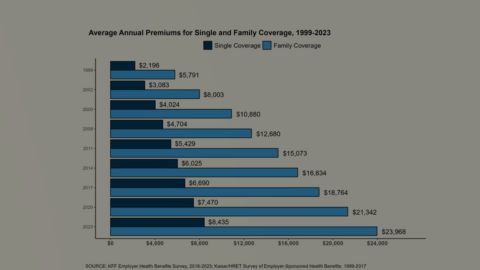Look, the evidence is clear: hospitals are taking in a ton of 340B money, and we don’t know where it goes. But the circumstantial evidence is that it doesn’t go to charity care.
The storyline here is so well-worn that I fear that policy wonks are getting desensitized to the reality (I’m certainly feeling like this is getting repetitive). And that’s dangerous, because we have a clear problem.
So gird your loins and drive into the latest set of datapoints — from Health Capital Group, which ran an analysis for PhRMA — that show that the most profitable 340B hospitals are just as profitable as their non-340B peers — 340B isn’t keeping the lights on — and yet invest less in charity care than peer hospitals that aren’t in the program.
And, indeed, the rich 340B hospitals aren’t investing more in charity care than hospitals with more rickety finances, the report shows, suggesting that there are some institutions out there really taking advantage of the lack of transparency.
One of my greatest worries about biopharma is that a great, life-changing technology will fail — and patients left adrift — by the inability of our system to properly reimburse for the value of that technology.
This is mostly a gene-therapy-specific worry. The track record so far has been discouraging. While there have been commercial successes, there have also been plenty of companies that completed the arduous road to approval, only to struggle to garner the kind of reimbursement needed to survive. (This story — and accompanying chart — lives rent-free in my head.)
All of that is on my mind as I process a number of small items this morning.
First, Courtney Rice at Acadia Strategy surfaced an interesting number that seems to have been missed during Biomarin’s earnings call last week: its hemophilia gene therapy has an initial net price of around $800,000 in Germany. That’s way, way lower than the U.S. price, and it raises all kinds of issues about whether the European market is willing to support gene therapies.
Then there is this optimistic piece from Joshua Cohen on Forbes.com about a fascinating, topical, chronic use of gene therapy in dystrophic epidermolysis bullosa, where there seems to be commercial success. It’s not the usual one-and-done model, but if you’re looking for good news, stick this in the files.
And, finally, the Harvard PORTAL folks have a pretty good overview in Health Affairs of the how-do-we-pay-for-this concepts floating around gene therapy. They’re not particularly prescriptive, but it’s worth noting that authors also wonder aloud if the government needs to step in here. I mean, the Harvard PORTAL people generally support the government stepping in, but it’s worth asking the question of when and how intervention is in the best interest of patients (and industry).
Alex Azar and Xavier Becerra’s appearance at the Milken Institute’s Future of Health Summit was framed as a “clash” — that word appeared in multiple headlines — but it’s more useful to take some of Azar’s comments in isolation.
First, Azar’s take on the IRA seems to reflect a new conventional wisdom on the way to attack the law. It’s now less about raising concerns over innovation and more about access. This isn’t a new concept, but the fact that Azar has the messaging down is noteworthy.
Second, Azar is still defending international reference pricing as an approach to control drug pricing. I had always wondered if that was just a vestige of Trump’s approach to policy, as opposed to something with deeper support among right-leaning policy types, and the fact that Azar is contining to promote the idea suggests that it might be the latter, at least in part.
Elsewhere:
The “chairman’s mark” on the PBM legislation being considered by the Senate Finance Committee is out. So is the CBO score of the bill, including the new provisions around patient cost-sharing. It doesn’t seem like the financials here put the bill at this, but this really isn’t my area of expertise. I guess we’ll see what objections arise tomorrow.
Awareness of the burden placed on patients by the U.S. health care system is absolutely critical for anyone working in the system, so this new Health Affairs paper, which quantifies some of those stresses, is probably a must-read.
The UK doesn’t think Vertex’s cystic fibrosis meds are cost-effective, setting up a repeat of a debate that dates back nearly a decade. (In 2019, Vertex and the UK came to a four-year agreement on the right reimbursement rates for the meds, but that agreement is now sunsetting.)
Look, negotiation with the VA is nothing like “negotiation” under the IRA, and now there is a thoughtful Politico piece making that clear. Or clearer, anyway.
Bernie Sanders is going to haul pharma execs to the Hill, according to STAT. I don’t think this is a new threat, but it seems to be a consistent one.
$15,900 is the per-course price on for Sage’s new medicine for post-partum depression. Biopharma Dive said that the price is lower than some analysis expected. Here’s how the company framed out the value prop:
If this email was forwarded to you, and you’d like to become a reader, click here to see back issues of Cost Curve and subscribe to the newsletter.





